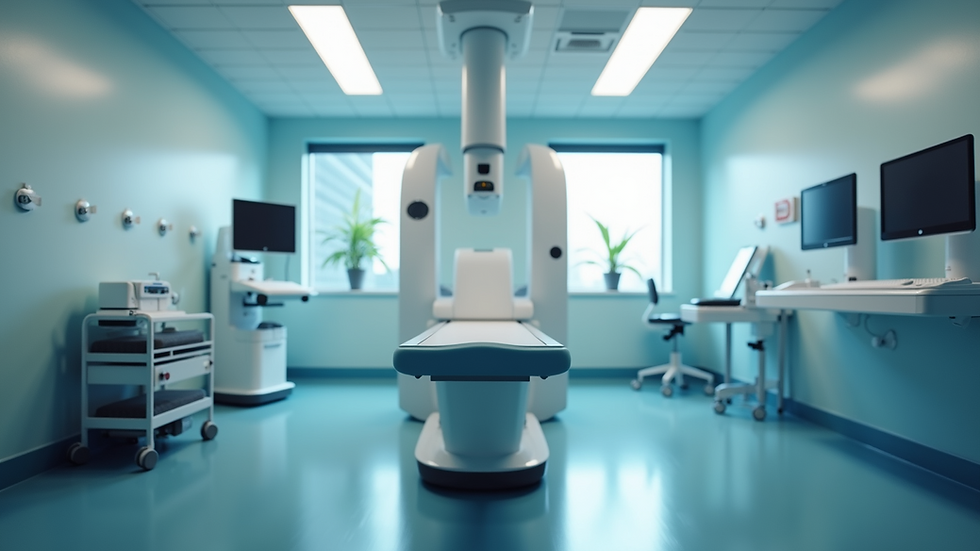Understanding the Benefits of Low-Energy X-Ray Therapy
- robbiehakeem1
- Sep 23
- 3 min read
X-ray therapy has become a vital tool in modern medicine, offering a range of benefits for patients with various health conditions. This treatment method uses controlled doses of radiation to target specific areas of the body, promoting healing and reducing pain. In this article, we will explore the many advantages of x-ray therapy, focusing on its practical applications and what patients can expect from this innovative treatment.
Exploring the Key X-Ray Therapy Benefits
X-ray therapy offers several significant benefits that make it a preferred choice for many healthcare providers. Here are some of the most important advantages:
Non-invasive treatment: Unlike surgery, x-ray therapy does not require incisions or anesthesia. This reduces the risk of infection and shortens recovery time.
Targeted approach: The therapy focuses radiation precisely on the affected area, minimizing damage to surrounding healthy tissues.
Pain relief: X-ray therapy can reduce inflammation and alleviate chronic pain, especially in conditions like arthritis or tendonitis.
Improved healing: By stimulating cellular repair processes, x-ray therapy can accelerate the healing of wounds and fractures.
Versatility: It is effective for a variety of conditions, including skin disorders, joint problems, and certain cancers.
These benefits make x-ray therapy a valuable option for patients seeking effective and less invasive treatment alternatives.

How Low-Energy X-Ray Therapy Works
The process of low-energy x-ray therapy involves the use of low doses of radiation to stimulate healing in targeted tissues. This form of therapy is particularly useful for treating superficial conditions because the radiation penetrates only a short distance beneath the skin.
The therapy works by:
Reducing inflammation: Radiation helps to calm the immune response, which can decrease swelling and pain.
Stimulating cell regeneration: It encourages the production of new cells, aiding tissue repair.
Modulating nerve activity: This can help reduce pain signals sent to the brain.
Patients typically undergo several sessions, each lasting a few minutes. The treatment is painless and does not require recovery time, allowing patients to continue their daily activities immediately afterward.

What are the Most Common Side Effects of Radiation Therapy?
While x-ray therapy is generally safe, some patients may experience side effects. These are usually mild and temporary but understanding them can help patients prepare and manage their treatment better.
Common side effects include:
Skin irritation: Redness, dryness, or mild peeling may occur at the treatment site.
Fatigue: Some patients feel tired after sessions, though this usually resolves quickly.
Localized discomfort: Mild soreness or tenderness in the treated area can happen but is often short-lived.
Healthcare providers monitor patients closely to minimize these effects. They may recommend skincare routines or rest periods to support recovery.

Practical Tips for Patients Considering X-Ray Therapy
If you are thinking about x-ray therapy, here are some practical recommendations to ensure the best experience and outcomes:
Consult your healthcare provider: Discuss your medical history and any concerns before starting treatment.
Follow pre-treatment instructions: This may include avoiding certain medications or skincare products.
Attend all scheduled sessions: Consistency is key to achieving optimal results.
Report side effects promptly: Early communication helps manage any issues effectively.
Maintain a healthy lifestyle: Proper nutrition and hydration support healing during therapy.
By following these tips, patients can maximize the benefits of x-ray therapy and improve their overall health.
The Future of X-Ray Therapy Benefits in Medicine
Advancements in technology continue to enhance the effectiveness and safety of x-ray therapy. Researchers are exploring new ways to tailor treatments to individual patient needs, improving precision and reducing side effects further.
Emerging trends include:
Personalized dosing: Adjusting radiation levels based on patient-specific factors.
Combination therapies: Using x-ray therapy alongside other treatments for better outcomes.
Portable devices: Making therapy more accessible in various healthcare settings.
These innovations promise to expand the applications of x-ray therapy and improve patient quality of life.
Understanding the benefits of x-ray therapy helps patients make informed decisions about their healthcare options. With its targeted approach, minimal side effects, and proven effectiveness, this treatment continues to be a valuable tool in managing a wide range of medical conditions. For more detailed information on what to expect during treatment, visit low-energy x-ray therapy.




Comments